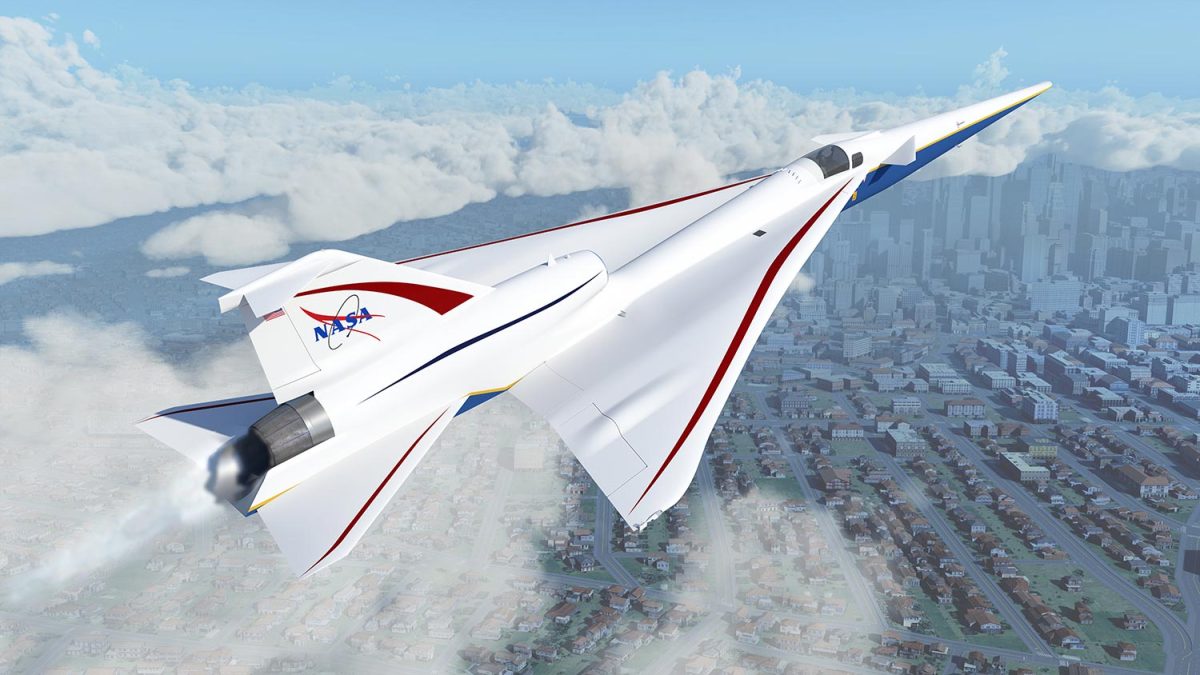NASA’s X-59 Quiet SuperSonic Technology aircraft, or QueSST, is designed to fly faster than the speed of sound without producing a loud, disruptive sonic boom, which is typically heard on the ground below aircraft flying at such speeds. Instead, with the X-59, people on the ground will hear nothing more than a quiet sonic thump – if they hear anything at all. Credit: NASA / Joey Ponthieux
NASA’s quiet supersonic X-59 aircraft now has the jet engine that will power it in flight.
Earlier this month, at Lockheed Martin’s Skunk Works facility in Palmdale, California, the F414-GE-100 engine was installed. This marks a major milestone as the X-59 approaches the completion of its assembly.
The F414-GE-100 engine from General Electric Aviation measures 13-foot-long and packs 22,000 pounds of propulsion energy and will power the X-59 as it flies at speeds up to Mach 1.4 and altitudes around 55,000 feet.

A GE Aviation F414-GE-100 engine is installed in NASA’s quiet supersonic X-59 aircraft, at Lockheed Martin’s Skunk Works facility in Palmdale, California. The 13-foot-long engine packs 22,000 pounds of propulsion energy and will power the X-59 to speeds up to Mach 1.4. Installation of the engine marks a major milestone as the X-59 nears assembly completion, taxi tests, and first flight. Credit: NASA/Carla Thomas
“The engine installation is the culmination of years of design and planning by the NASA, Lockheed Martin, and General Electric Aviation teams,” said Ray Castner, NASA’s propulsion performance lead for the X-59. “I am both impressed with and proud of this combined team that’s spent the past few months developing the key procedures, which allowed for a smooth installation.”
The X-59 team will follow the aircraft’s assembly with a series of ground tests and ultimately, first flight in 2023.
NASA’s X-59 is the centerpiece of the agency’s Quesst mission. The aircraft is designed to reduce the sound of sonic booms, which occur when an aircraft flies at supersonic speeds, to a quiet sonic “thump.” This will be demonstrated when NASA flies the X-59 over communities around the U.S. starting in 2025, with the goal of providing the data necessary to open the future to commercial supersonic flight over land, greatly reducing flight times.
Share your story or advertise with us: Whatsapp: +2347068606071 Email: info@newspotng.com














